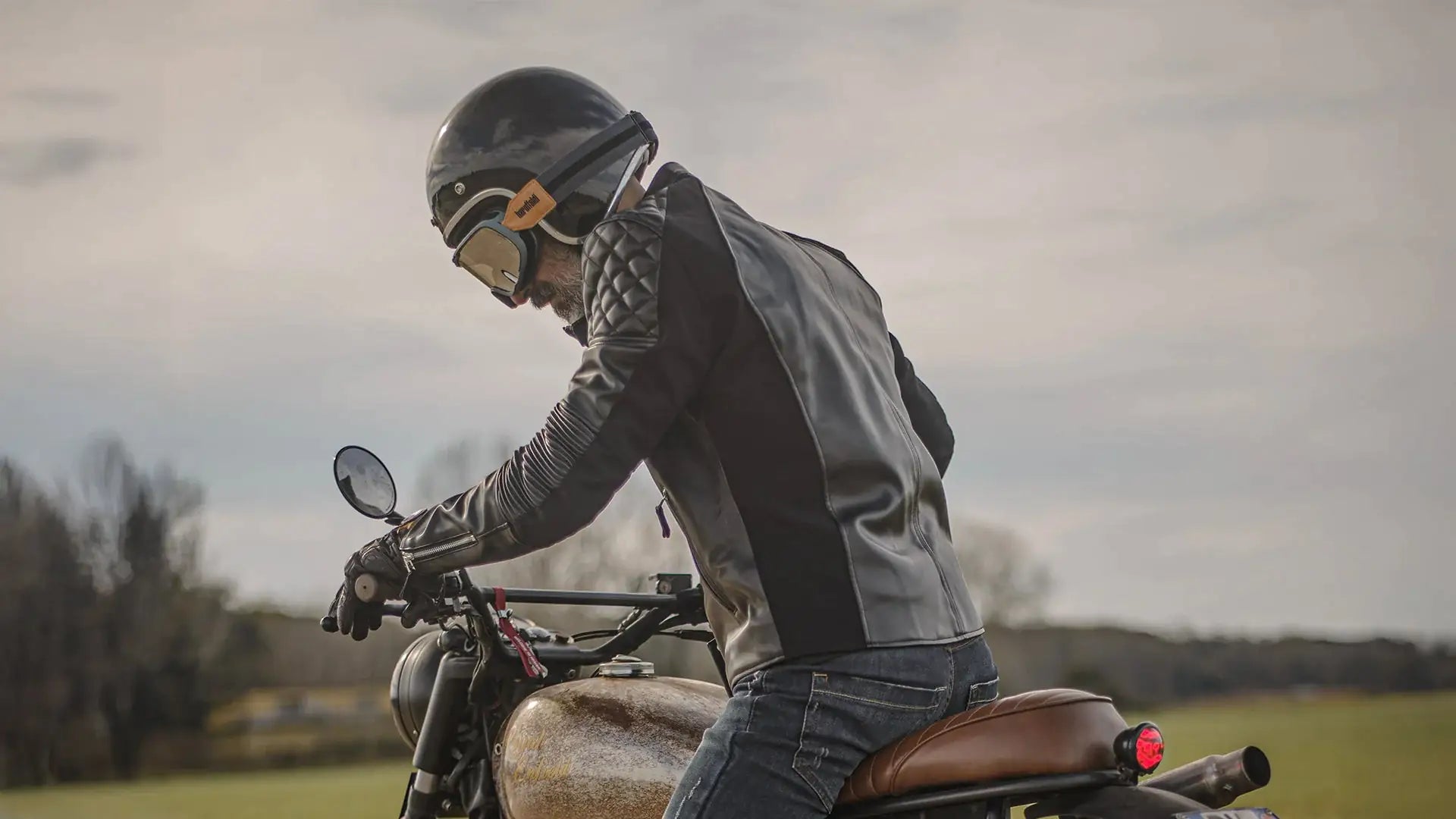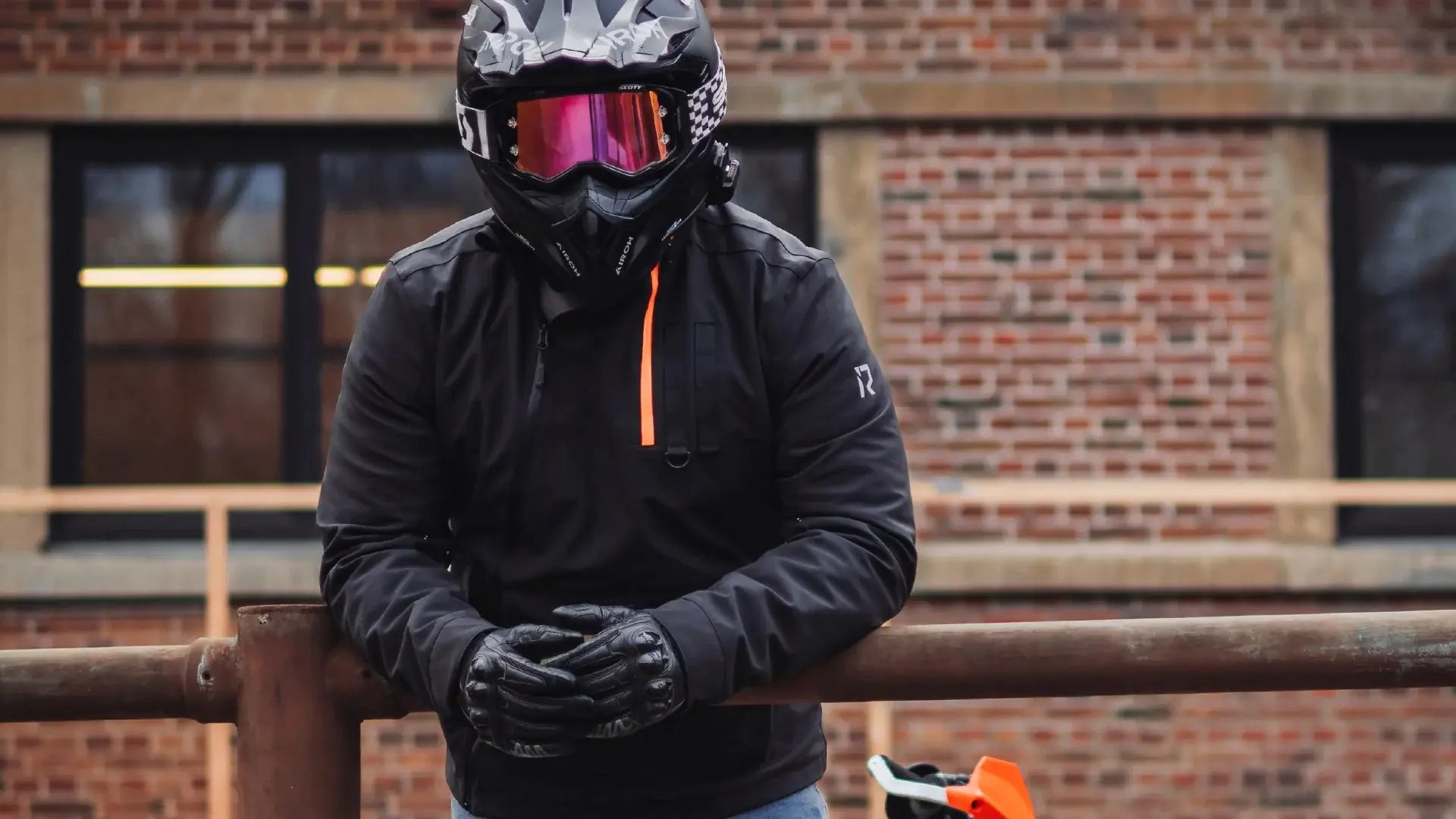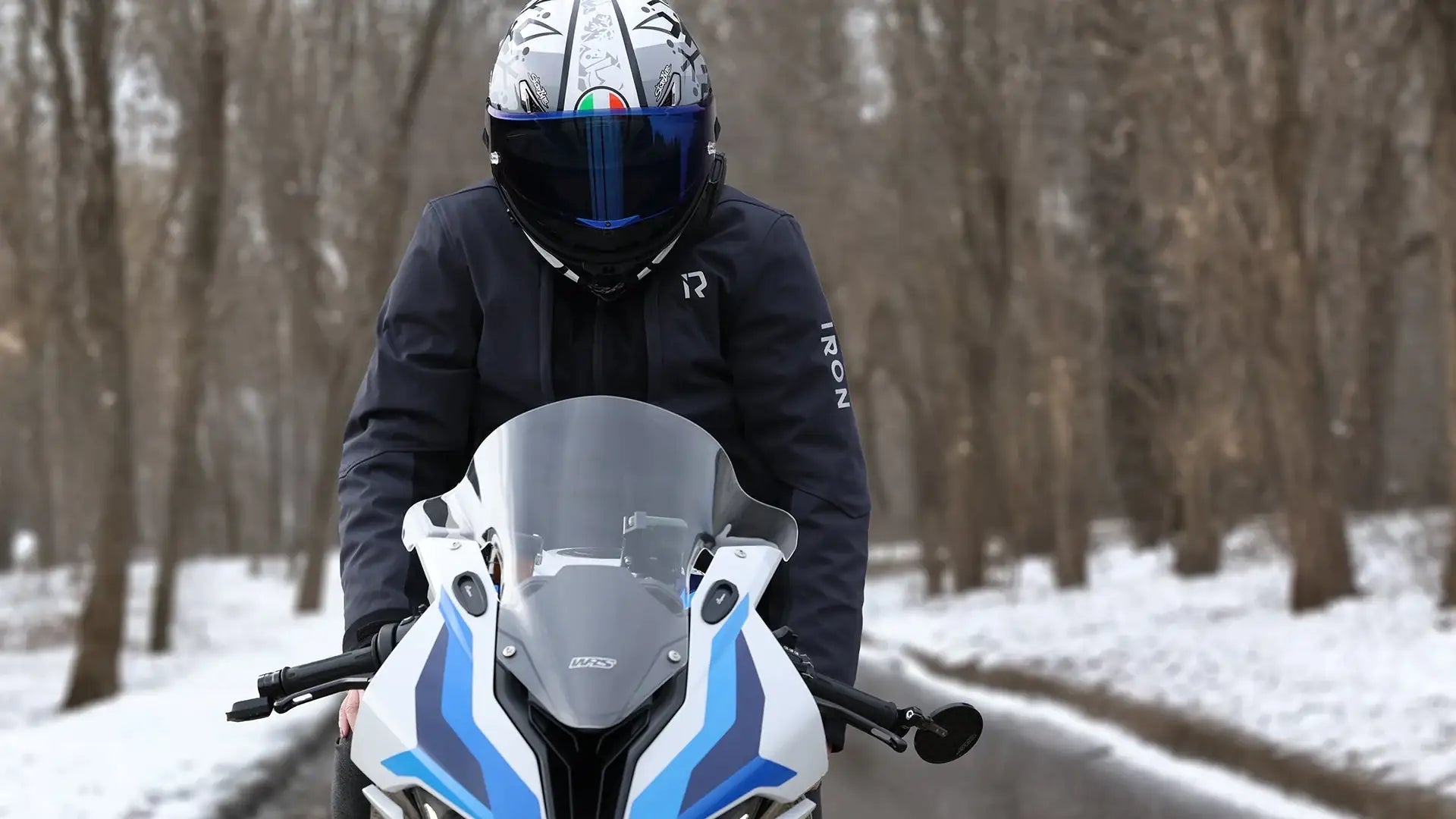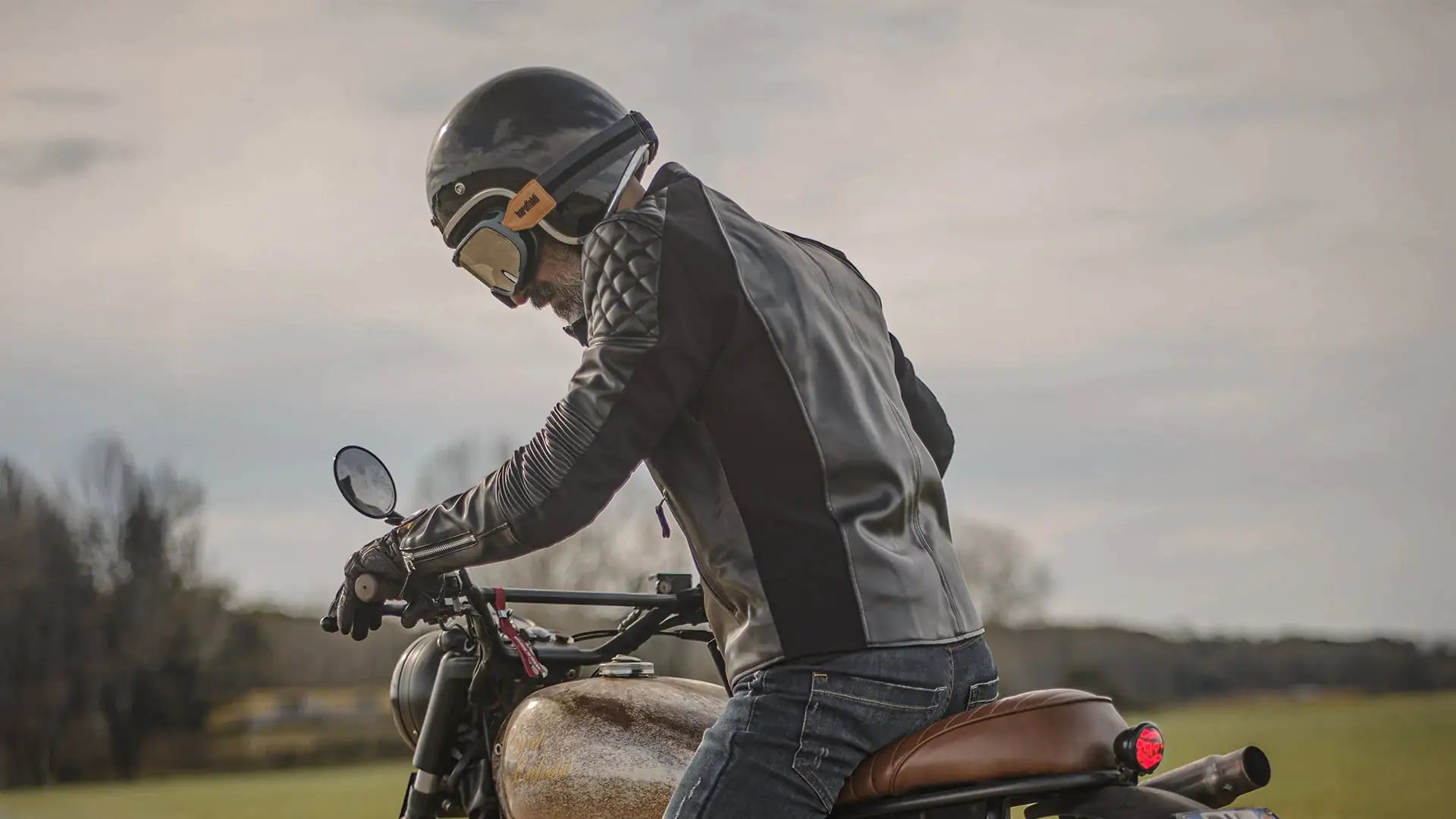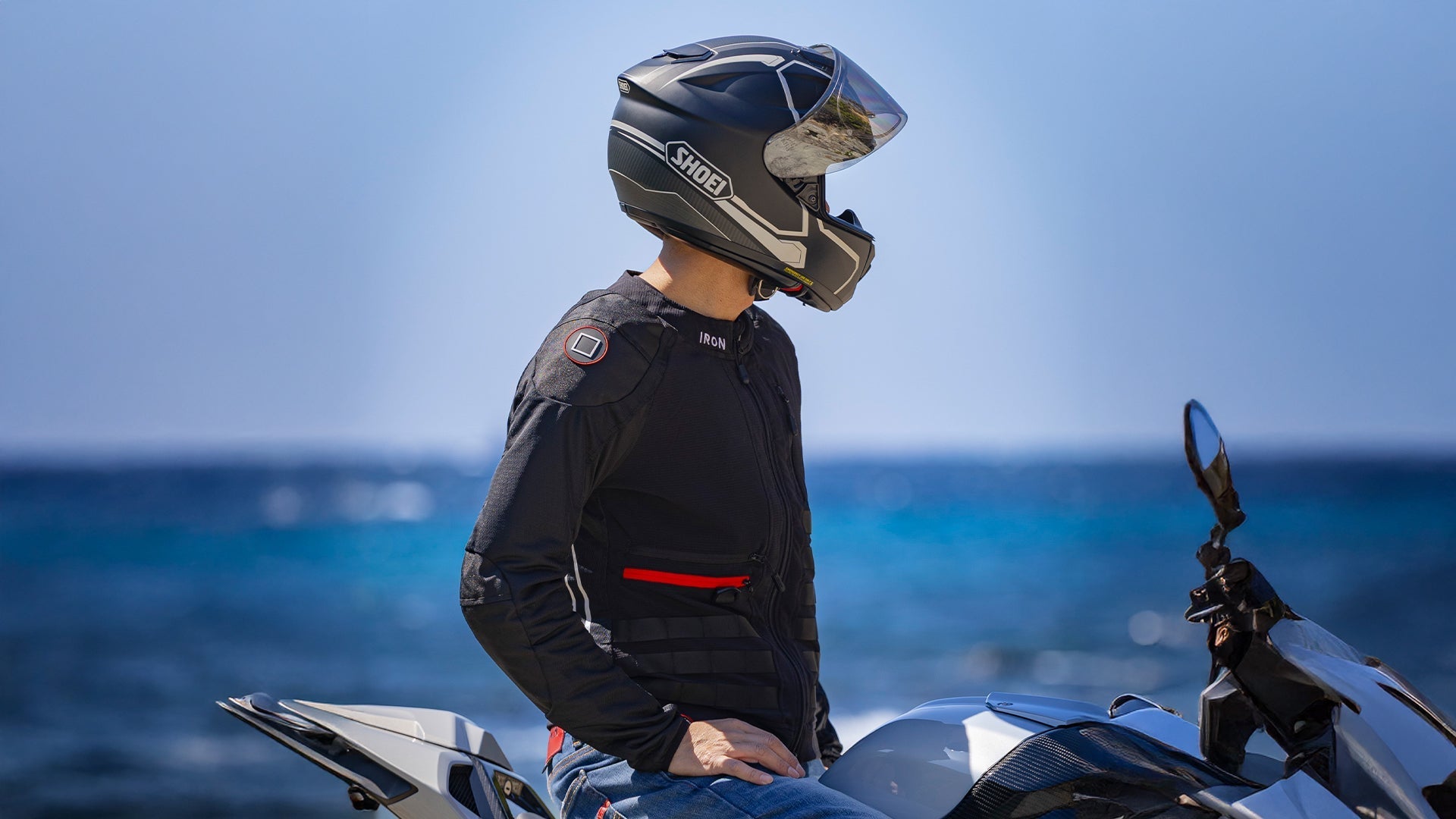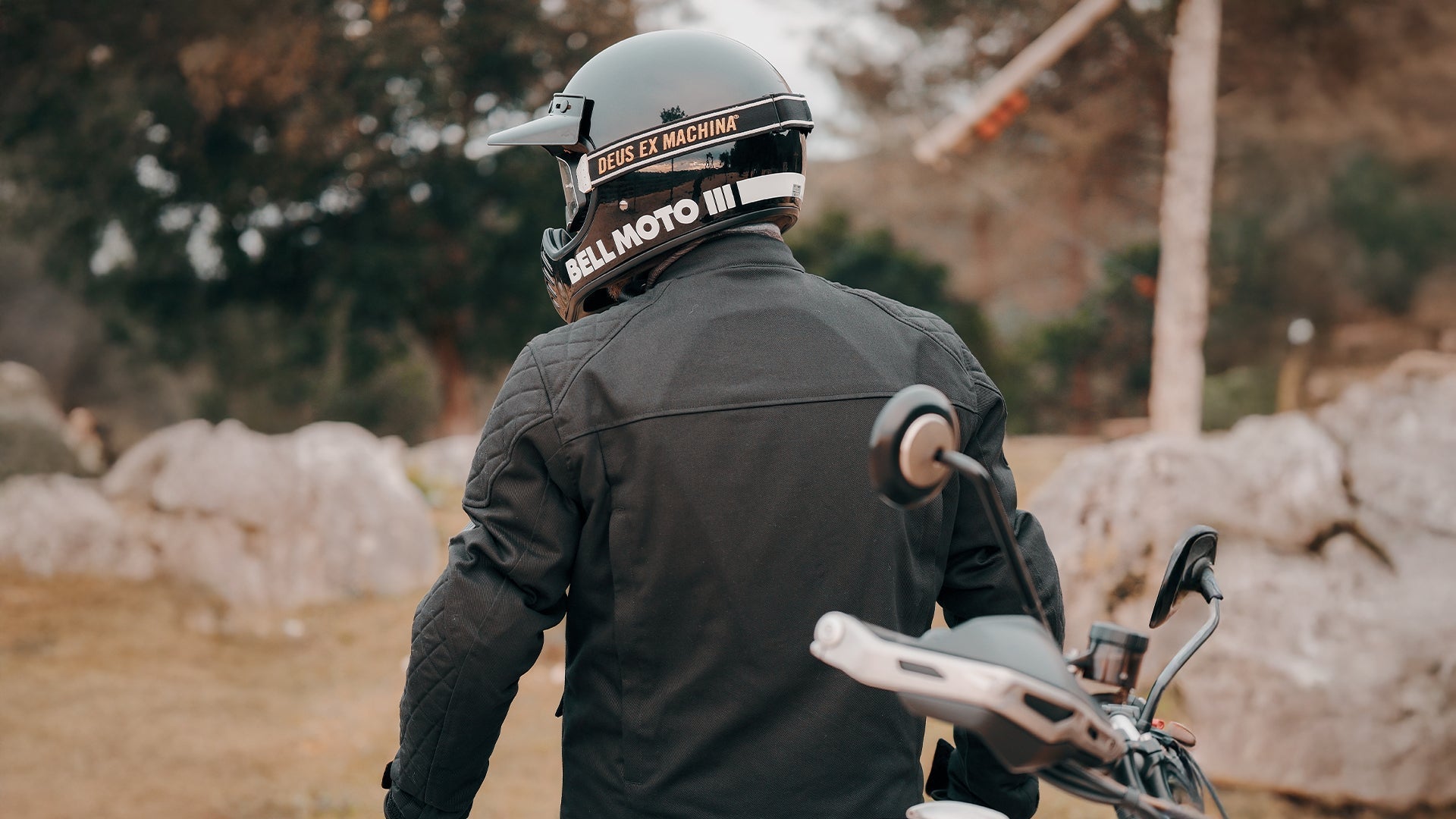Vintage motorcycle jackets are more than a nostalgic style. They're built on craftsmanship, materials, and functional design that defined 20th-century motorcycling. Whether you're a collector or a rider who values authenticity, a true vintage motorcycle jacket brings rugged full-grain leather, original stitching, aged hardware, and proven road heritage. This guide explores how to identify authentic pieces, assess condition, and compare vintage with modern riding jackets.
Key Takeaways
-
Authentic vintage motorcycle jackets reveal full-grain leather through weight, aroma, imperfections, and natural grain patterns.
-
Key indicators include reinforced stitching, brass hardware, asymmetrical zippers, nylon linings, and visible patina.
-
Iconic historical brands like Perfecto and Buco popularized features now found in modern retro-inspired protective gear.
What to Look For in a Vintage Motorcycle Jacket
Natural leather imperfections, heavyweight feel, and that distinct earthy aroma are all signs you’re handling real vintage. Organic grain patterns that vary across the hide are proof of full-grain leather, while genuine vintage jackets often carry signs of creasing around elbows and collar areas.
When examining authenticity, check for quality stitching at shoulder seams, cuffs, and stress zones. Tight, consistent thread lines and high-quality hardware like brass snaps and YKK or vintage Talon zippers signal premium construction. A properly aged jacket should show hardware patina, not peeling or flaking plating.
If you're unsure, try the water droplet test: place a small drop on an inconspicuous area. Genuine leather darkens slightly, then gradually returns to normal
Recognizing Patina and Real Wear Patterns
Your jacket's patina tells its story. Over decades of use, natural leather develops a finish that artificial distressing simply can’t match. Look for wear along flex points like shoulders, elbows, and lower back. These creases and soft edges form naturally from movement and friction.
That said, not all wear is desirable. Dryness, cracking at seams, or damaged linings might require expensive restoration. They could also signal a permanent loss of integrity. Use a gentle tug test on interior threads to assess fiber brittleness.
Check for mustiness or stiffness caused by water damage, which can compromise the structure. However, many jackets with dry leather can be revived with proper conditioning. Try opening and closing every zipper and snap to confirm durability.
How to Evaluate Vintage Jacket Condition
When handling vintage motorcycle jackets, examine the leather thickness throughout the torso and sleeves. Uniformity is a positive indicator. High-stress points like shoulders and elbows should show soft creases but not flaking or full cracks.
Test zippers gently. Functional original hardware, especially from brands like Talon or YKK, improves the jacket’s value. Inspect interior linings, especially early nylon or quilted blends, for delamination or signs of mildew.
Features That Define Classic Motorcycle Jacket Styles
Classic motorcycle jacket features evolved through utility. The asymmetrical zipper, made famous by Schott's Perfecto, helped riders block wind during highway rides. Double-breasted front panels, snap-down lapels, and storm flaps protected against elements. Diagonal zippered chest pockets were invented for easy access while seated.
Epaulets and belted waists reflect heritage riding functionality. Reinforced elbows and shoulders, articulated back panels, and ventilation eyelets signal jackets built for life on a bike—not just the sidewalk. True vintage pieces often include leather-lined collars, waistband loops, and gusseted sleeves for enhanced mobility.
Watch for signs of replacement parts or newer zippers mismatched with the era—it could indicate repairs that impact collectability.
Historical Brands That Made Vintage Motorcycle Jackets Iconic
Schott’s Perfecto jacket, introduced in 1928, remains the blueprint for many modern designs. The asymmetrical zipper and short-waist cut transformed motorcycle gear. Its cultural significance peaked when Marlon Brando wore it in The Wild One, and it’s now preserved at the Museum of Modern Art.
Post-WWII, Buco made major advances by introducing nylon linings, which were lightweight, warm, and more breathable than wool. Their clean cafe racer designs helped shape modern minimalist moto fashion.
Sears' Allstate jackets also offer historical value, often made with horsehide or cowhide and heavy-duty metal zippers. These pieces reflect the transition from functional gear to lifestyle staples as motorcycle culture spread in mid-century America.
How Vintage Sizing and Fit Differs From Modern Jackets
Vintage motorcycle jackets were cut to match early bike ergonomics: short hemlines, boxier shoulders, and tight sleeve openings. They were designed for upright seating and lean-forward stances.
When fitting a vintage piece, test the range of motion in a seated position. Reach forward as if holding handlebars. If the shoulders pull or sleeves ride up too far, it may not be safe or comfortable for real riding.
Take chest measurements while seated. Allow for leather break-in, especially with thick cowhide. If the jacket hasn’t been worn in a long time, expect 5% to 10% relaxation as you start using it again.
Restoration Tips for Preserving Vintage Leather
Before restoring a vintage jacket, take note of its current condition. A gentle cleaning with a damp cloth and soft-bristle brush can remove dust and grime. Use pH-neutral leather cleaners and avoid anything with alcohol or ammonia.
For dry leather, apply conditioner in stages. Don’t oversaturate. Focus on seams, elbows, and cuffs where cracking tends to start. Lingering odors in the lining can often be treated with baking soda or hanging the jacket in fresh air.
Tears near seams should be hand-stitched with a period-appropriate thread. If needed, reinforce stress points with leather-safe adhesives or underlays. Keep in mind: preservation is often more valuable than over-restoration.
Should You Choose a Vintage-Style Modern Jacket Instead?
Vintage jackets have style, that’s for sure, but modern jackets offer advantages while taking style cues from historical versions. In other words, a vintage-look motorcycle jacket offers the timeless appeal of classic design without the risks or compromises that come with wearing an actual vintage piece.
Modern vintage-style alternatives can deliver the same asymmetrical cuts, brass hardware, and distressed finishes without sacrificing comfort or durability. Riders can enjoy the look of café racer or early cruiser styles with materials that are lighter, more breathable, and better suited for everyday use.
Beyond aesthetics, safety is another key reason to choose a modern jacket with vintage styling. Many retro-inspired jackets now come equipped with CE-rated armor, reinforced seams, and abrasion-resistant textiles—features rarely found in authentic vintage gear. This makes them ideal for real-world riding, where impact protection and modern fit matter just as much as appearance. For those who love history but ride in the present, a vintage-look jacket strikes the right balance between form and function.
Comparing Vintage vs. Vintage-Style Motorcycle Jackets
Here’s a quick comparison between these two types of jackets:
|
Feature |
Vintage Jackets |
Vintage-Style Jackets |
|
Protection |
None or aftermarket inserts |
Built-in CE Level 1 or 2 armor |
|
Hardware |
Original brass snaps, Talon or YKK zippers |
Modern rust-resistant YKK components |
|
Fit and sizing |
Boxy shoulders, short waist, tight sleeves |
Consistent sizing with a tailored fit |
|
Use case |
Collection, display, occasional casual wear |
Daily riding, safety-focused retro styling |
For a more relaxed look with built-in protection, explore our top picks for casual motorcycle jackets.
Our Picks for Vintage Style Jackets
If you’re in the market for a vintage-style jacket with modern reliability, check out our picks below.
RIDEIRON Vintage Armored Protective Riding Jacket
The RIDEIRON Vintage Armored Protective Riding Jacket (MJ5508) blends classic cut with protective upgrades. Built from textured waffle fabric and styled with vintage proportions, it includes CE Level 2 armor at shoulders, elbows, and spine. A removable quilted liner and rear ventilation ports make it ride-ready across multiple seasons. This is a smart pick for those who want heritage aesthetics with modern protection where it matters most.

RIDEIRON Classic Vintage-Style PU Leather Protective Riding Jacket
The RIDEIRON Classic PU Leather Breathable Protective Riding Jacket (MJ5507) delivers timeless vintage appeal with modern motorcycle protection. Its retro-inspired PU leather exterior offers a classic look, while CE-certified armor in key zones ensures real impact protection beneath the surface. Designed for breathable comfort with a lightweight feel, this jacket is ideal for riders who want old-school styling paired with essential safety features for everyday riding.

If you’re planning to ride year-round, our guide to winter motorcycle jackets covers insulated, weatherproof options that pair well with vintage styling.
Bottom Line on Vintage Motorcycle Jackets
Whether it’s authentic or inspired, a vintage motorcycle jacket pairs effortlessly with today’s fashion. Layer with hoodies or thermal shirts in cooler weather to maintain warmth without disrupting the jacket’s silhouette. If you prefer a modern ethical twist, explore vegan leather alternatives with retro detailing. These honor classic forms while aligning with current values.
FAQs on Vintage Motorcycle Jackets
Below are a few frequently asked questions on vintage motorcycle jackets.
How much should I expect to pay for a quality vintage leather motorcycle jacket?
Expect $200 to $600 for most leather jackets in good condition. Iconic brands or pristine examples may go for over $1,000 depending on age, leather type, and hardware.
Can vintage motorcycle jackets be worn safely for actual riding today?
Not without compromise. Most lack modern CE armor or abrasion resistance. Consider adding armor inserts or opting for a vintage-style jacket with built-in protection.
What’s the difference between replica vintage and authentic vintage motorcycle jackets?
Authentic pieces show natural aging and hardware from their era. Replicas preserve the silhouette and materials but offer modern fits, safety features, and consistent sizing.
How do I properly store my vintage leather jacket between wears?
Hang on a padded hanger in a cool, dry space. Use breathable garment bags. Avoid sunlight, and condition the leather periodically to prevent cracking.




